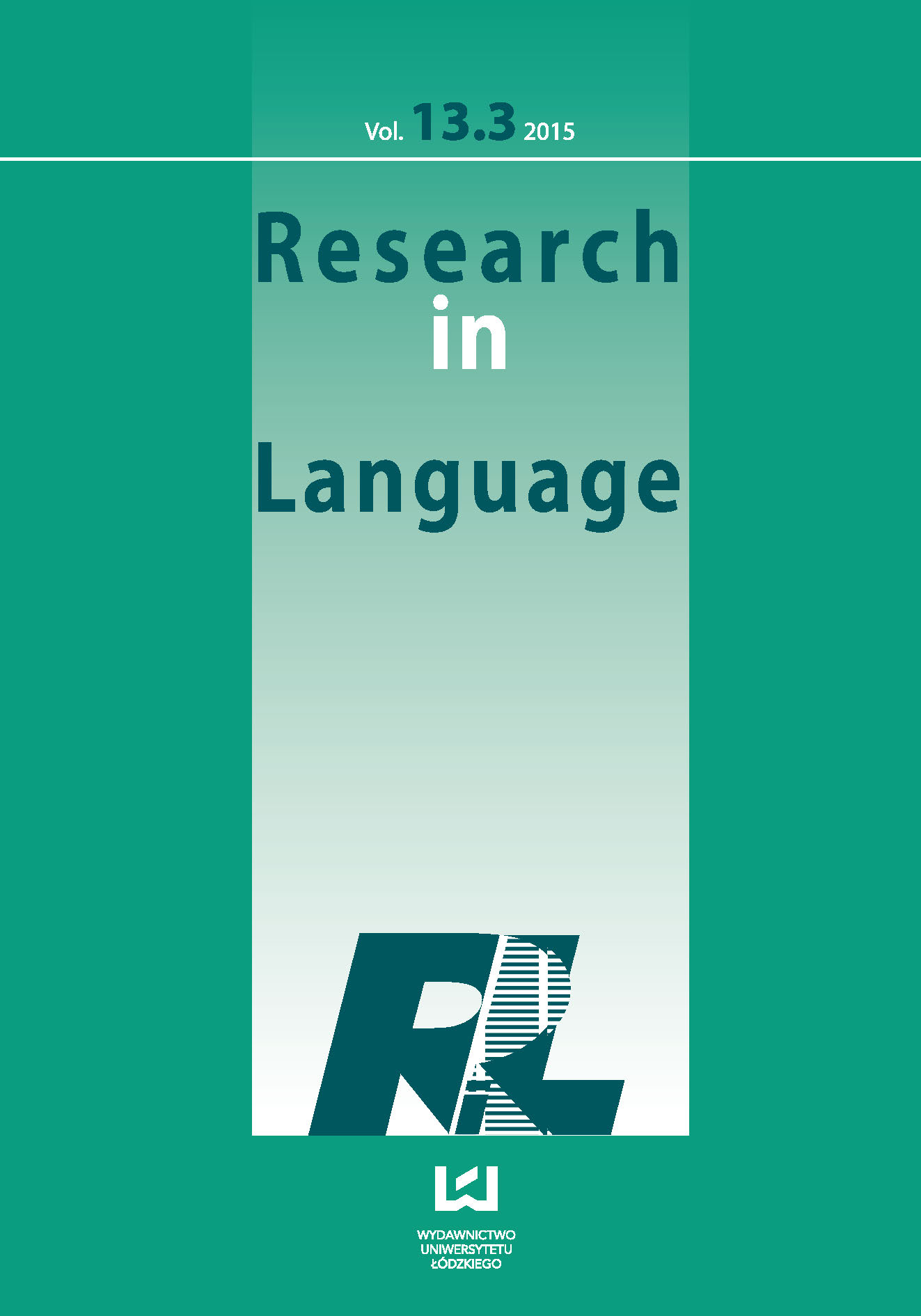Topic- and mode-sensitive interaction strategies: functions of ellipsis in oral communication
DOI:
https://doi.org/10.1515/rela-2015-0027Keywords:
ellipsis, interaction, oral discourse, textchat, discourse topic, mode of communicationAbstract
In this article, we discuss ellipsis as an interactive strategy by analysing the author’s textchat corpus and the VOICE corpus of English as a Lingua Franca. It is found that there were fewer repetitions in the textchat data, and this is explained as a consequence of the textchat mode. Textchat contributions are preserved as long as the chat is active or has been saved, and therefore users can scroll through and review the discussion, compared to the more fleeting nature of oral conversation. As a result, repetition is less necessary. The frequency of other functions identified could be attributed to the topic of discourse. Discussions involve much ellipsis used to develop discourse, although some were self-presentations with repetition used to confirm details. Back-channel support and comments were often low because speakers instead used forms like yeah as supportive utterances.
References
Chun, D. (1994). Using computer networking to facilitate the acquisition of interactive competence. System, 22(1), 17-31.
Google Scholar
Cogo, A. (2009). Accommodating difference in EFL conversations: A study of pragmatic strategies. In A. Mauranen & E. Ranta (Eds.), English as a lingua franca: Studies and findings (pp. 254-273). Newcastle: Cambridge Scholars Publishing.
Google Scholar
Cogo, A., & Dewey, M. (2012). Analysing English as a lingua franca: A corpus-driven investigation. London/New York: Continuum International Publishing Group.
Google Scholar
Darhower, M. (2002). Interactional features of synchronous computer-mediated communication in the intermediate L2 class: A sociocultural case study. Calico, 19(2), 249-277.
Google Scholar
Fernández-García, M., & Martínez Arbelaiz, A. (2003). Learners’ interactions: A comparison of oral and computer-assisted written conversations. ReCALL, 15(1), 113-136.
Google Scholar
Heritage, J. (2005). Conversation analysis and institutional talk. In K. L. Fitch & R. E. Sanders (Eds.), Handbook on language and social interaction (pp. 103-147). Mahwah, New Jersey: Lawrence Erlbaum Associates.
Google Scholar
Kramsch, C. (1983). Interaction in the classroom: Learning to negotiate roles and meanings. Die Unterrichtspraxis, 16(2), 175-190.
Google Scholar
Mauranen, A. (2012). Exploring ELF: Academic English shaped by non-native speakers. Cambridge, U.K.: Cambridge University Press.
Google Scholar
Peterson, M. (2009). Learner interaction in synchronous CMC: A sociocultural perspective. Computer-Assisted Language Learning, 22(4), 303-321. doi: 10.1080/09588220903184690.
Google Scholar
Sauro, S., & Smith, B. (2010). Investigating L2 performance in text chat. Applied Linguistics, 31(4), 554-577. doi: 10.1093/applin/amq007.
Google Scholar
VOICE. 2011. The Vienna-Oxford International Corpus of English (version 1.1 Online). Director: B. Seidlhofer; Researchers: A. Breiteneder, T. Klimpfinger, S. Majewski, R. Osimk, M.-L. Pitzl. http://voice.univie.ac.at. (date of last access, 1 March 2013).
Google Scholar
White, J. (2013a). Interaction in Glocal Learner Communities Online. Academic Exchange Quarterly, 17(4), 53-59.
Google Scholar
White, J. (2013b). Ellipsis as a Marker of Interaction in Spoken Discourse. Research in Language, 11(3), 251-276. doi: 10.2478/v10015-012-0020-x.
Google Scholar










